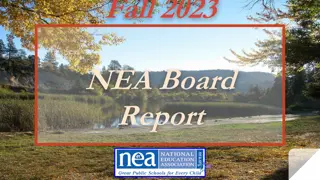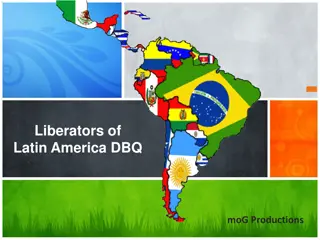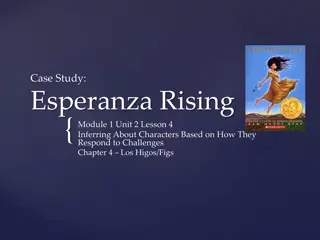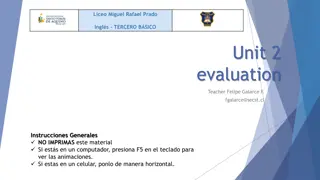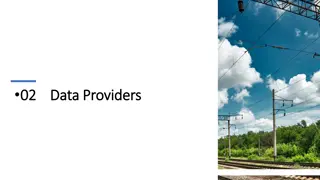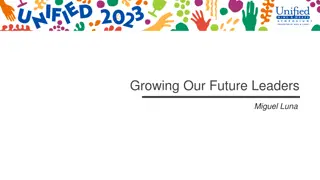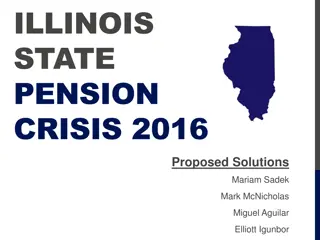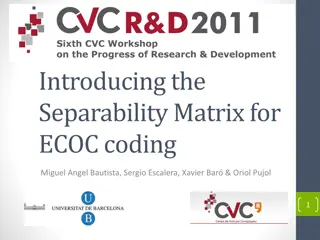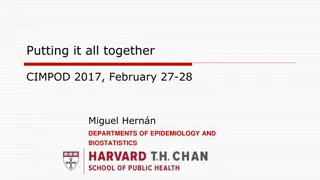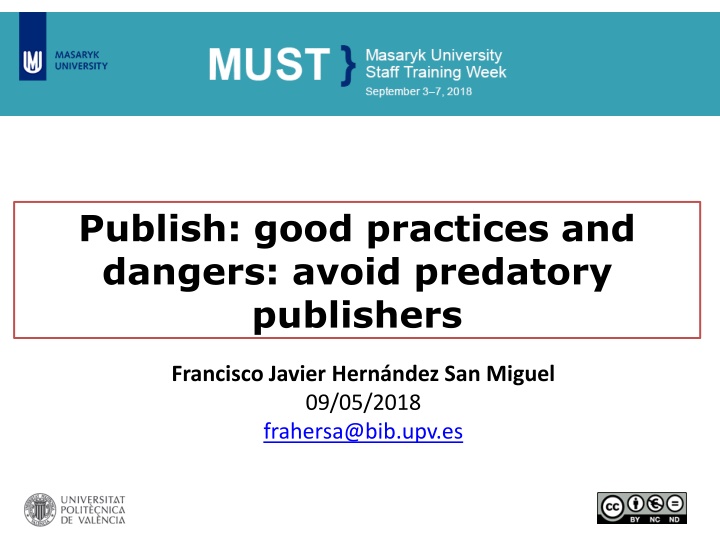
Avoid Predatory Publishers - Good Practices and Dangers
Understanding the risks of predatory publishers and implementing good practices to avoid them is crucial in the scientific publication world. Learn how to identify and steer clear of predatory journals, where not to publish, and the importance of ethical standards in publishing to safeguard your research credibility and impact.
Download Presentation

Please find below an Image/Link to download the presentation.
The content on the website is provided AS IS for your information and personal use only. It may not be sold, licensed, or shared on other websites without obtaining consent from the author. If you encounter any issues during the download, it is possible that the publisher has removed the file from their server.
You are allowed to download the files provided on this website for personal or commercial use, subject to the condition that they are used lawfully. All files are the property of their respective owners.
The content on the website is provided AS IS for your information and personal use only. It may not be sold, licensed, or shared on other websites without obtaining consent from the author.
E N D
Presentation Transcript
Publish: good practices and dangers: avoid predatory publishers Francisco Javier Hern ndez San Miguel 09/05/2018 frahersa@bib.upv.es
Communication of scientific information. Publish Where? The channel (journal, congress) chosen to publish a paper determines the type of audience that will read it and whether, subsequently, it will be evaluated in accreditation and evaluation processes.. Articles in scientific journals of international prestige : To disseminate research results to the international scientific community In order for the paper to be positively assessed by national assessment and accreditation agencies. They are particularly valued, in some areas only, in journals that appear in the database Journal Citation Reports of Web of Science
Full publication cycle
Compiling previous recommendations Set your target, audience, type of article Before or after the investigation? Consult information sources with REAL quality indicators (Ulrichsweb, WOS, official regulations for the evaluation of researchers) Where to publish?. Beware of "predator" editors Follow ethical standards Best written in English Structure the article correctly Follow the Author guides (of the disciplines or journals) Source: Hern ndez San Miguel, F. J., & Mart nez Galindo, F. J. (2018). D nde y por qu publicar? Aumenta tu impacto con acceso abierto. Retrieved from https://riunet.upv.es:443/handle/10251/95516
Set your target, audience, type of article Source: Wood, A., & de Bufal , C. (2015). Publica tu investigaci n con Wiley. Retrieved from https://riunet.upv.es/handle/10251/49949
What is a predatory journal? A predatory journal is a publication that actively asks researchers for manuscripts. They have no peer review system and no true editorial board and are often found to publish mediocre or even worthless papers. They also ask for huge publication charges. Why do academics publish in such journals? In research environments, there is usually more value for quantity over quality. Hiring and promotion of academics is based largely on their number of publications. What is a predatory journal? (2017). Retrieved July 19, 2018, from https://www.thehindu.com/sci-tech/science/what-is-a-predatory- journal/article21039351.ece
Where NOT to publish. Predatory Publishers Beall, J. (2015). Beall s list of predatory publishers 2015. http://scholarlyoa.com/publishers/ SPAM??
Where NOT to publish. Predatory Publishers For six years, this blog maintained by the University of Colorado was active, compiling a list of this type of Journal and Publishers. Misleading metrics (http://scholarlyoa.com/other- pages/misleading-metrics): companies that publish false impact factors (not recognized by the scientific community) that are used by predatory publishers to legitimize their supposed credibility. Hijacked journals (http://scholarlyoa.com/other- pages/hijacked-journals/): publishers who supplant the identity of a journal (with very similar titles) in order to offer authors, in the "pay-per-publication" format, the possibility of appearing in prestigious journals or so- called similar ones.
Misleading metrics Fraudulent indexes and false metrics. A scam for publishers and authors Source: Repiso, Rafael (2016). Indices fraudulentos y falsas m tricas. Un timo para editores y autores. Retrieved from https://comunicarautores.com/2016/11/17/indices-fraudulentos-y-falsas-metricas-un-timo-para-editores-y-autores/
Misleading metrics These publishers and journals generate impact metrics for journals, and in many cases opt for the strategy of supplanting and confusing their terminology with the famous Impact Factor (Journal Citation Reports). Jeffrey Beall reported 36 false quality and impact metrics. International Research Journal Impact Factor (JIF) Society Activity for Advanced Science Index Global Impact Factor Science Impact Factor (ISRA) African Journals American Journals and Research (ASJR) Quality Centre for Impact International Journals (I.F.S.I.J.) for IndexCopernicus Factor Services for Scientific (SIS) Indexing Services Jour Informatics Standards Scientific Journal Impact Factor Journal Impact Factor SCIJOURNAL.ORG (International Scientific Institute) Journals (JIFACTOR) Impact Factor CiteFactor Infobase Index Institute for Science Information (ISI) International Impact Services International Research International Organized Research (I2OR) International Journal Factor (IJIF) Cosmos Impact Factor Technical Impact Factor Journal Influence Factor Directory of Indexing and Impact Factor (DIIF) Directory of Journal Quality Factor Einstein Institute for Scientific Information (EISI) Eurasian Scientific Index (ESJI) General Impact Factor Factor Journals Influence Factor (JIF) Consortium. Journal Universal Impact Factor Institute International Scientific Indexing (ISI) of International Scientific Institute (ISI) (scijournal.org) Impact International Services for Impact Factor and Indexing (ISIFI) for JPR Impact Factor Institute Open Academic Journals Index Journal Pubicon Science Index Source: Repiso, Rafael (2016). Indices fraudulentos y falsas m tricas. Un timo para editores y autores. Retrieved from https://comunicarautores.com/2016/11/17/indices-fraudulentos-y-falsas-metricas-un-timo-para-editores-y-autores/
Where to publish. Avoid predatory publishers Source: Thinkchecksubmit. (2018). Retrieved from https://thinkchecksubmit.org/
Are you submitting your research to a trusted journal? Is it the right journal for your work? More research is being published worldwide. New journals are launched each week. Stories of publisher malpractice and deception are also on the rise. It can be challenging to find up-to-date guidance when choosing where to publish. How can you be sure the journal you are considering is the right journal for your research? Source: Thinkchecksubmit. (2018). Retrieved from https://thinkchecksubmit.org/
Reference this list for your chosen journal to check if it is trusted. Do you or your colleagues know the journal? Have you read any articles in the journal before? Is it easy to discover the latest papers in the journal? Can you easily identify and contact the publisher? Is the publisher name clearly displayed on the journal website? Can you contact the publisher by telephone, email, and post? Is the journal clear about the type of peer review it uses? Are articles indexed in services that you use? Is it clear what fees will be charged? Does the journal site explain what these fees are for and when they will be charged? Source: Thinkchecksubmit. (2018). Retrieved from https://thinkchecksubmit.org/
Do you recognise the editorial board? Have you heard of the editorial board members? Do the editorial board mention the journal on their own websites? Is the publisher a member of a recognized industry initiative? Do they belong to the Committee on Publication Ethics (COPE) ? If the journal is open access, is it listed in the Directory of Open Access Journals (DOAJ) ? If the journal is open access, does the publisher belong to the Open Access Scholarly Publishers Association (OASPA) ? Is the journal hosted on one of INASP s Journals Online platforms (for journals published in Bangladesh, Nepal, Sri Lanka, Central America and Mongolia) or on African Journals Online (AJOL, for African journals)? Is the publisher a member of another trade association? Source: Thinkchecksubmit. (2018). Retrieved from https://thinkchecksubmit.org/
If you can answer yes to most or all of the questions on the list. Complete the check list and submit your article only if you are happy you can answer yes to most or all of the questions. You need to be confident your chosen journal will have a suitable profile among your peers to enhance your reputation and your chance of gaining citations. Publishing in the right journal for your research will raise your professional profile, and help you progress in your career. Your paper should be indexed or archived and be easily discoverable. You should expect a professional publishing experience where your work is reviewed and edited. Only then should you submit your article. Source: Thinkchecksubmit. (2018). Retrieved from https://thinkchecksubmit.org/
Check for evidence of the quality of publications. Examples. Ulrichsweb (http://ulrichsweb.serialssolutions.com/) http://ulrichsweb.serialssolutions.com/title/1532000803933/34309
http://ulrichsweb.serialssolutions.com/title/1532000803933/34309http://ulrichsweb.serialssolutions.com/title/1532000803933/34309 Lack of Misleading Metrics. Quality indexes World-wide accepted
Source: NECOBELAC Project. Retrieved from http://www.unesco.org/new/en/communication-and-information/portals-and-platforms/goap/key- organizations/latin-america-and-the-caribbean/necobelac/
Black Lists vs White Lists. What is your opinion? Databases Master Lists
Some trick questions Can we find predatory journals in the ISSN Portal? in Cabells s International? in PubMed? https://scholarlykitchen.sspnet.org/2017/09/07/confusion-journals-pubmed- now/ in Ulrichsweb? Do researchers really know that the presence of a journal in Google Scholar or CrossRef is not an indicator of quality?

